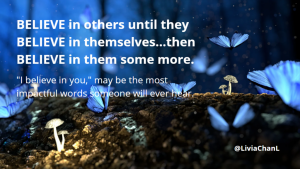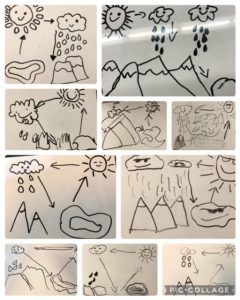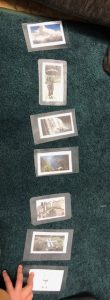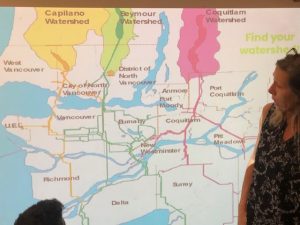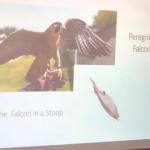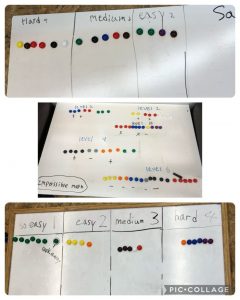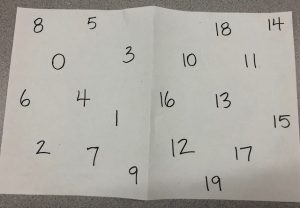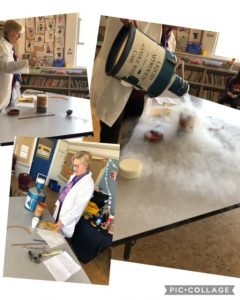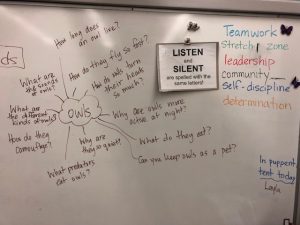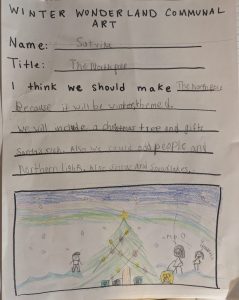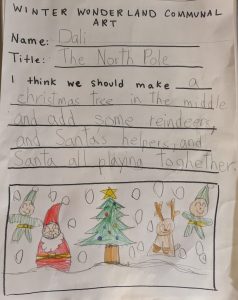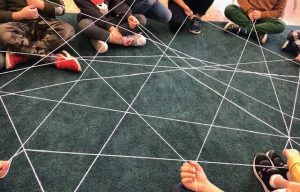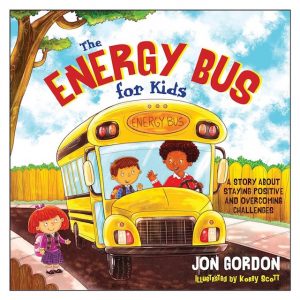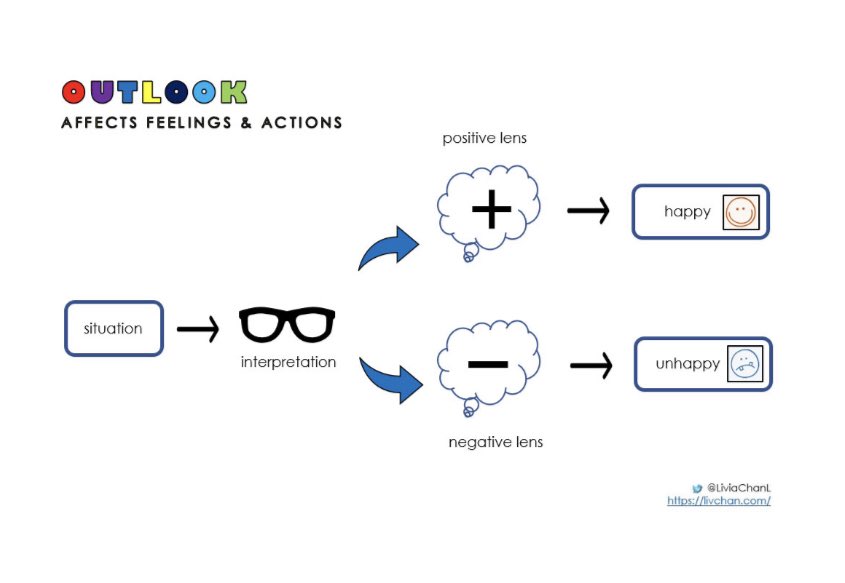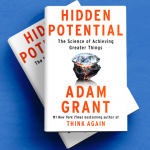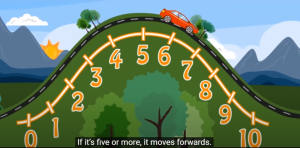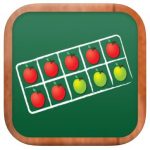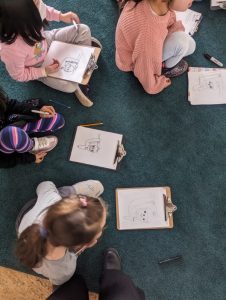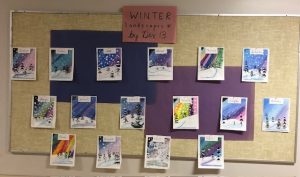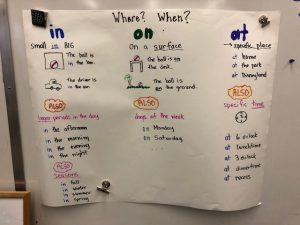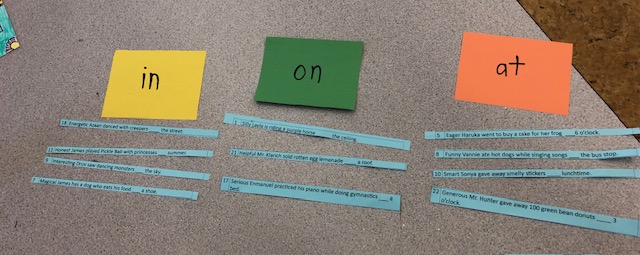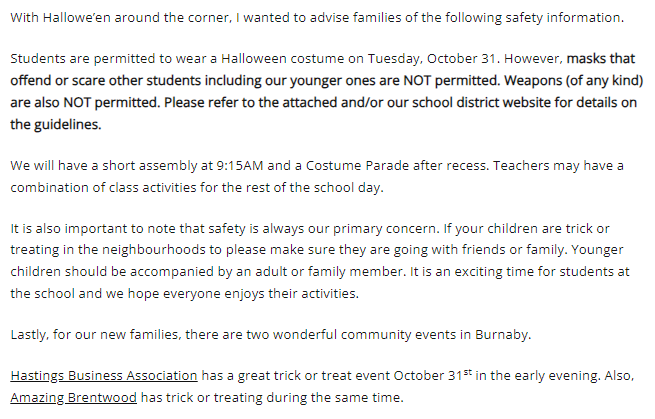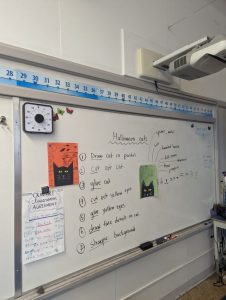Dear families,
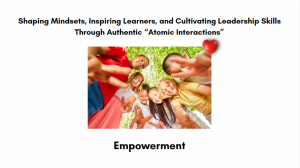 I had the greatest pleasure to present to 250 educators in Nevada over Zoom yesterday morning! I shared about how we can shape our mindsets to see CONNECTIONS as the key to being an effective educator and teach students how to build positive relationships with each other, inspire them to see their own POTENTIAL as we lift them up by believing in them and providing opportunities to grow in their stretch zones, and cultivate leadership skills to EMPOWER them to be the best versions of themselves each day.
I had the greatest pleasure to present to 250 educators in Nevada over Zoom yesterday morning! I shared about how we can shape our mindsets to see CONNECTIONS as the key to being an effective educator and teach students how to build positive relationships with each other, inspire them to see their own POTENTIAL as we lift them up by believing in them and providing opportunities to grow in their stretch zones, and cultivate leadership skills to EMPOWER them to be the best versions of themselves each day.
Every atomic interaction is a moment of connection that offers an opportunity to intentionally uplift others through our love, kindness, and gratitude. We not only brighten someone’s day but also create lasting imprints on their heart, cultivating joy within them and ourselves. I strive to live by this motto and encourage your children to do so too as we work together to foster a connected community of caring learners and leaders.
Ways to support at home: Have conversations about how every interaction can be a positive one to build the kind of relationships we want to have. It takes great self-discipline especially when we are in the midst of challenging situations to have grace for others and to speak with love and kindness so that others feel heard and supported. “I can solve problems in peaceful ways.” Getting along with others and effective communication is key to our well-being. It begins with our mindset about how we value relationships.
It’s always interesting to learn what resonated most with participants in my sessions. Today, it seemed that sharing love and joy struck people most. Here are four of the most powerful statements I shared and say to your children regularly:
- I love you.
- I appreciate you.
- I believe in you.
- You bring me joy.
Brushing with Cedar Leaves
Last weekend, I had the greatest pleasure to join our Mentorship Network at Loon Lake in Maple Ridge for an overnight retreat. I have been a part of the organizing committee for five years as a supporter to beginning teachers in our district. One of the sessions was led by Ditta Cross who led us into to the forest to teach us about the Indigenous ways of connecting and respecting our land. One lesson that deeply resonated with me was called brushing. Here’s an explanation found on ChatGPT:
The Coast Salish people have a deep cultural connection with cedar trees, considering them sacred and using them for various purposes, including ceremonial practices and crafting. Cedar leaves, with their aromatic scent, are often used in brushing ceremonies.
Brushing ceremonies involve gently sweeping or brushing a person with cedar leaves to cleanse and purify their spirit, mind, and body. The fragrant essence of the cedar is believed to carry healing properties, removing negative energy and promoting balance and harmony.
This practice is conducted with reverence and respect for the cedar tree, acknowledging its significance in Coast Salish culture. The act of brushing with cedar leaves is considered a form of spiritual cleansing and renewal, often performed as part of traditional rituals or ceremonies within the community.
This practice has really resonated with many of the students too! There is something very calming about this.
Water is really important to us!
We are grateful to have had a guest speaker, Diana, from Skye Consulting, come to teach us about the water cycle, local watersheds, water conservation, and to answer these questions:
When we turn on the tap, where do you think this water comes from? What are different ways we use water?
We learned that our water in Burnaby comes from the Seymour Watershed.
Then we had an opportunity to draw the water cycle and do a sort to figure out the order with images.
Ways to support at home: Ask your child to explain the water cycle and tell you about watersheds. Practice water conservation!
Candy cane crystals
Watch a video to learn more about how our Borax crystals formed! If you like, make some more at home following this recipe. I enjoyed seeing the creativity. We didn’t just see candy canes, we saw beautiful crystal stars, snowflakes, and a heart too! Please note that these are made from Borax so if you have young children in the home, it is best to put it out of reach.
OWL (Orphaned Wildlife) in the Classroom
On Thursday, we had an informative session to learn about falcons and owls. We met a barn owl named Alba and a American kestrel, Willa. Check out the videos and more images in SpacesEDU. Students learned:
- The function of the OWL Society
- The basic biology and behaviour of raptors
- Sizes and types of raptors
- Dangers to raptors and other wildlife
- What students can do to help raptors and other wildlife
Ways to support at home: Ask your child to share five facts they know about owls. Be curious! Model curiosity and tell them what you wonder about. Visit the public library to take out books on owls, go online to look for more facts, or watch videos on owls. Anytime you search online, this is a great opportunity to talk about staying safe as they search and to teach them about using key words to type in the search bar. Adding “for kids” is a simple way to narrow your search, for example.
If you’d like to learn more, visit: OWL Rehab. They offer 30-60 minute guided tours on the weekends (by donation). Be sure to make an online reservation before you go.
They are located at 3800 – 72nd Street Unit 3, Delta, BC.
Self-reflections and Goal Setting
Two of our core competencies is reflective and critical thinking:
Critical and Reflective Thinking encompasses a set of abilities that students use to examine their own thinking and that of others. Students apply critical, metacognitive, and reflective thinking in given situations, and relate this thinking to other experiences, using this process to identify ways to improve or adapt their approach to learning. They reflect on and assess their experiences, thinking, learning processes, work, and progress in relation to their purposes. Students give, receive, and act on feedback and set goals individually and collaboratively. They determine the extent to which they have met their goals and can set new ones.
We spent some time reflecting on how we are as learners, what we feel proud of, and set some goals to work on for next term. I also gave them an opportunity to give me feedback on what I am doing well and how I can be a better teacher for them individually and for the class. I want to model reflective thinking and am in constant pursuit of learning and betterment. So, if you have feedback for me, please let me know too. I appreciate your support!
Winter Concert on Tuesday, December 12 (Two Performances)
We have been working hard with our buddies and Mr. Turpin on the songs and actions! Please have your child wear a white top and black bottoms on Tuesday. You should have received two red tickets to attend the evening show on Tuesday, December 12 at 6:30 pm. Please bring your tickets to the evening concert.
6:00 pm (or later) – Bring your child to the Annex – A2 (Strong Start room)
6:00 pm – Gym doors open (The PAC will have a concession stand. Thank you for supporting them!)
6:30 pm – Concert begins
After the performance – Pick up your child from the Music room in the Annex.
*Please let me know if you do not plan to attend so I can expect their absence. Also, we can release your tickets to other families when you return your unused tickets to school.
1:30 pm Concert – An option for families with young children or if you don’t have enough tickets for the evening performance. You do NOT need a ticket for this concert.
To practice the songs at home, check out our Musicians page. Here, you will also find the overview of what was taught this term by Mr. Turpin, which you can refer to when you receive your child’s Learning Update on December 20.
Gingerbread House Making
This Friday, December 15, we will be making gingerbread houses with our big buddies. Please have your child bring small assorted candies (nut free) in a labelled bag to decorate their own houses. They can start bringing them to school anytime next week.
Every student will be provided with a paper plate, royal icing, and graham crackers to build their houses. We are looking forward to this fun community building activity and can’t wait to see the creativity and joy that this activity will bring! Thank you for your ongoing support in making these moments memorable for our students.
Field Trips in the New Year – Save the dates because we will need parent volunteer drivers, please. Thank you for your support!
- Friday, January 12 – South for the Winter at Michael J. Fox Theatre (Collaborative dance performance with four Burnaby secondary schools). The notice will come home early next week.
- Monday, February 12 & Monday, February 26 – Ice skating at Bill Copeland from 9:00 to 11:00 am.
Every time I get to present to educators, I cannot help but feel so appreciative that I am your child’s teacher. Thank you for sharing them with us and for your part in supporting their education with me. I appreciate you!
With love, joy, kindness, and gratitude, Ms. Chan
